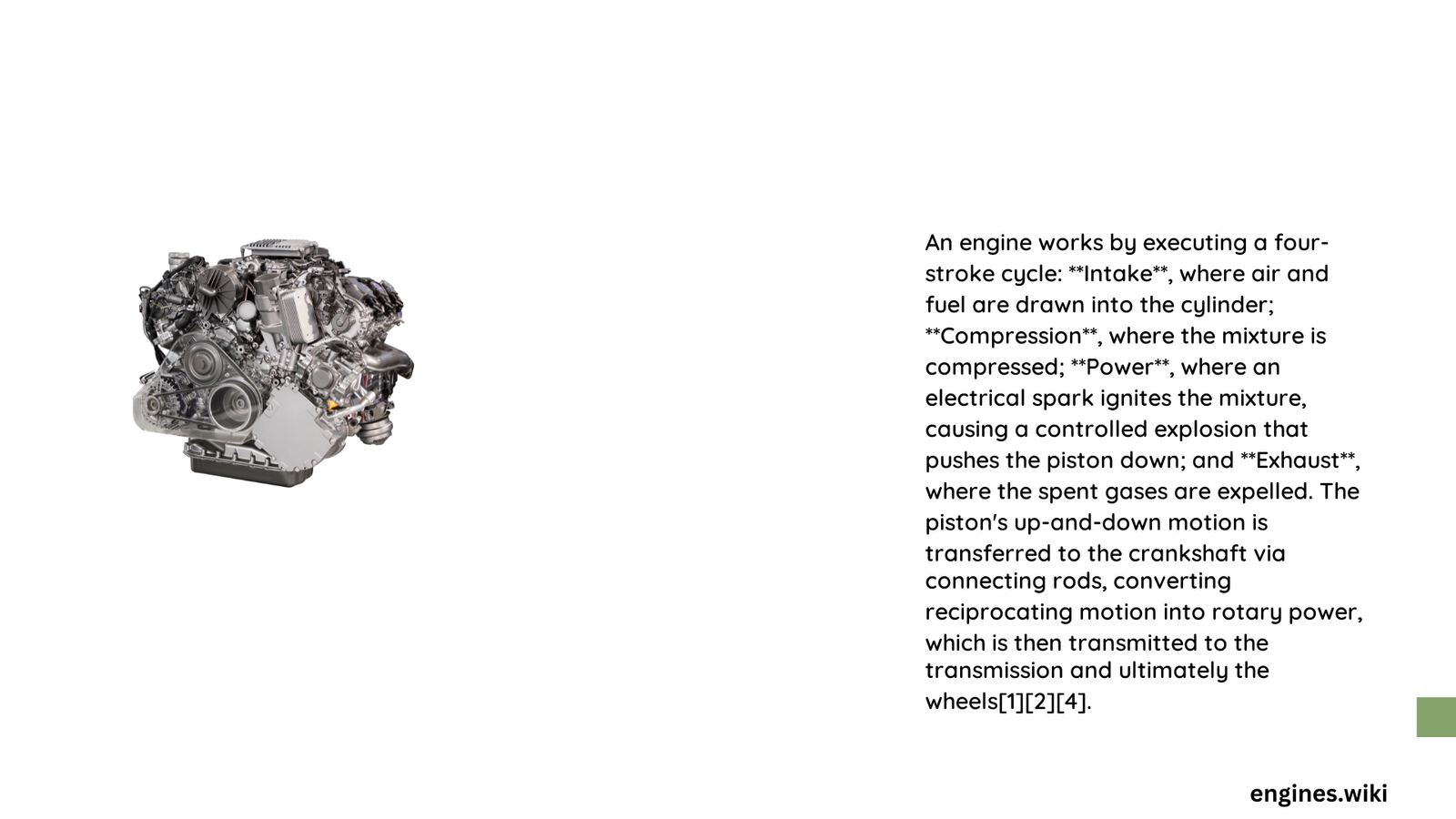Basics of How an Engine Works: Understanding Mechanical Power Generation
Modern engines are sophisticated machines that transform chemical energy from fuel into mechanical motion through a complex series of precisely timed interactions between mechanical components. At its core, an internal combustion engine converts fuel and air into powerful rotational energy by creating controlled explosions within enclosed cylinders, driving pistons that ultimately rotate the crankshaft and propel vehicles forward.
What Are the Primary Components of an Engine?
Engines consist of several critical components that work together seamlessly:
| Component | Primary Function | Material Composition |
|---|---|---|
| Piston | Converts explosive force into linear motion | Aluminum/Steel Alloys |
| Crankshaft | Transforms linear piston movement into rotational energy | Forged Steel/Cast Iron |
| Valves | Controls air and fuel intake/exhaust | Hardened Steel/Titanium |
| Spark Plug | Initiates fuel combustion | Copper/Nickel/Platinum |
How Does the Four-Stroke Cycle Work?
The four-stroke cycle represents the fundamental mechanism of most internal combustion engines:
- Intake Stroke
- Piston moves downward
- Intake valve opens
- Air-fuel mixture enters combustion chamber
-
Creates partial vacuum
-
Compression Stroke
- Piston moves upward
- Both valves close
- Air-fuel mixture gets compressed
-
Prepares for combustion
-
Power Stroke
- Spark plug ignites compressed mixture
- Controlled explosion occurs
- Piston forced downward
-
Generates mechanical energy
-
Exhaust Stroke
- Piston moves upward
- Exhaust valve opens
- Burnt gases expelled from cylinder
What Determines Engine Efficiency?
Several critical factors influence engine performance:
- Fuel Quality: Higher octane ratings improve combustion
- Air-Fuel Ratio: Optimal mixture around 14.7:1 by weight
- Compression Ratio: Typically between 8:1 to 12:1 for gasoline engines
- Thermal Management: Effective cooling prevents performance degradation
Why Do Different Engines Perform Differently?
Engine variations emerge from multiple design considerations:
Gasoline Engines
- Use spark-initiated combustion
- Lower compression ratios
- More responsive acceleration
- Higher RPM capabilities
Diesel Engines
- Compression-initiated combustion
- Higher compression ratios
- Greater torque production
- Improved fuel efficiency
What Maintenance Ensures Optimal Performance?
Regular maintenance prevents performance decline:
- Scheduled Oil Changes: Reduces internal friction
- Spark Plug Replacement: Ensures consistent ignition
- Air Filter Cleaning: Maintains proper air intake
- Timing Belt Inspection: Prevents mechanical misalignment
Technical Insights: Combustion Chemistry
The fundamental combustion reaction represents a complex molecular transformation:
[
2C_8H_{18} + 25O_2 \rightarrow 16CO_2 + 18H_2O + \text{Energy}
]
This equation demonstrates how hydrocarbon fuels interact with oxygen to produce carbon dioxide, water, and significant thermal energy.
Conclusion
Understanding engine mechanics reveals a remarkable symphony of engineering precision, where chemical energy transforms into mechanical motion through meticulously designed components and processes.

